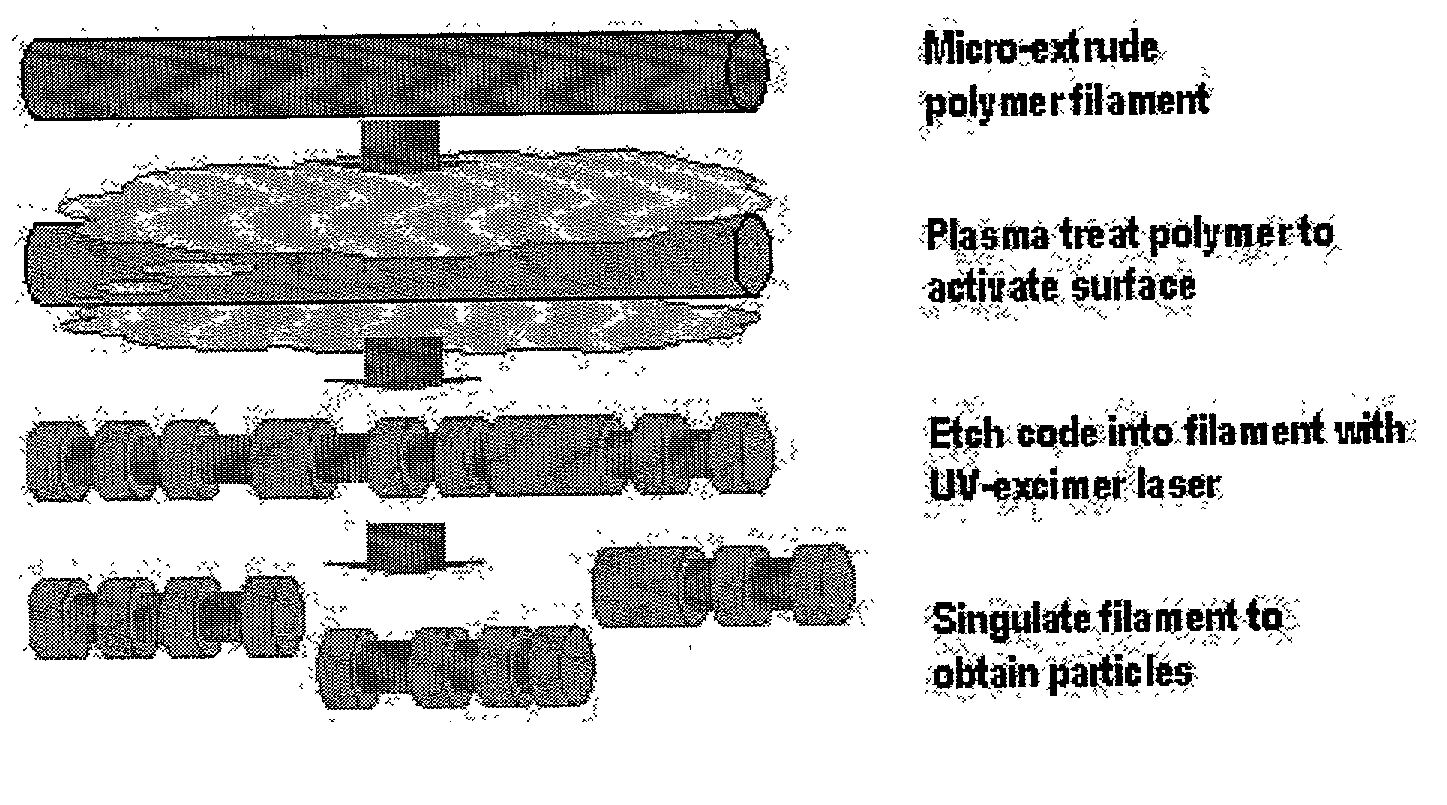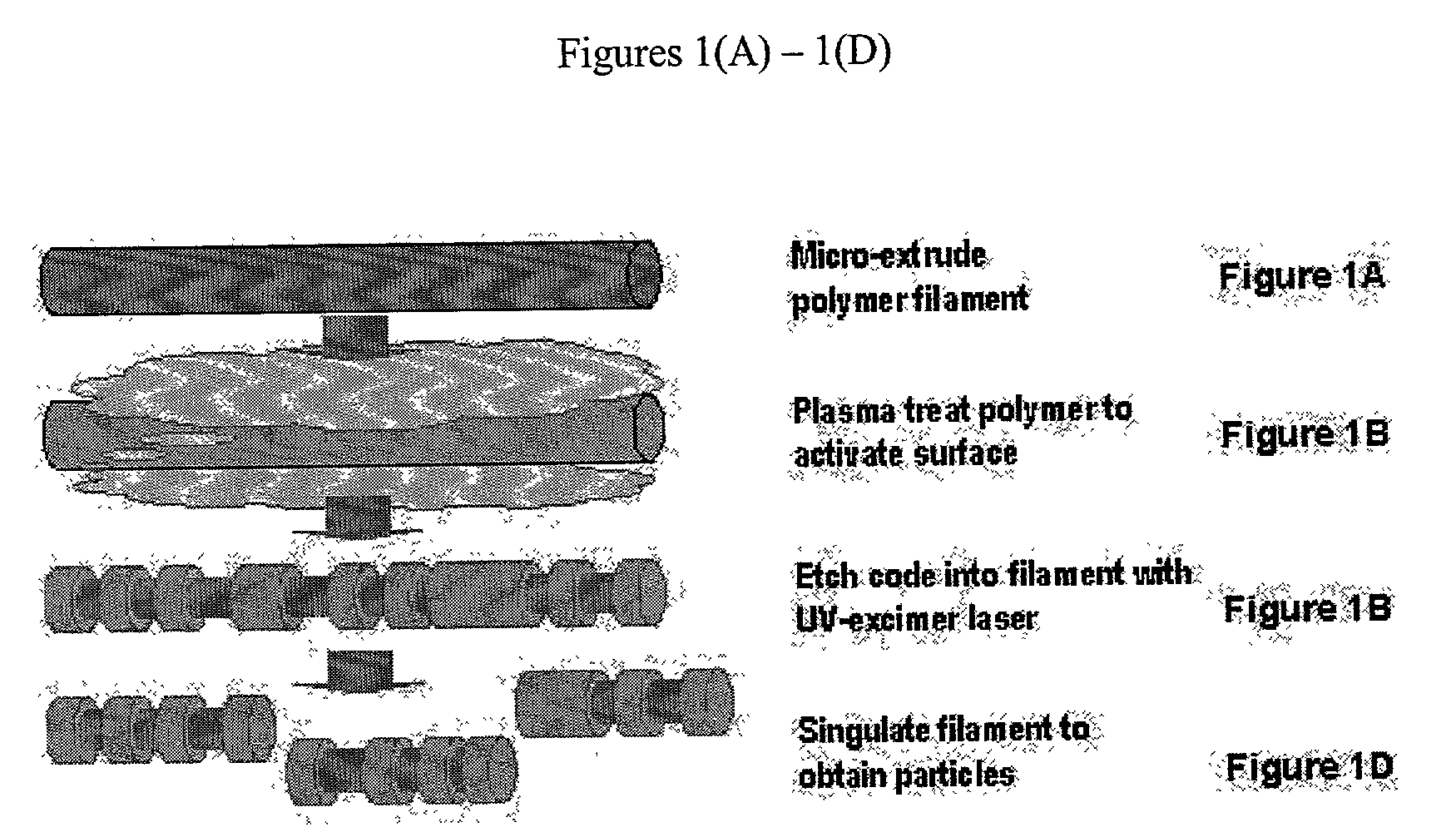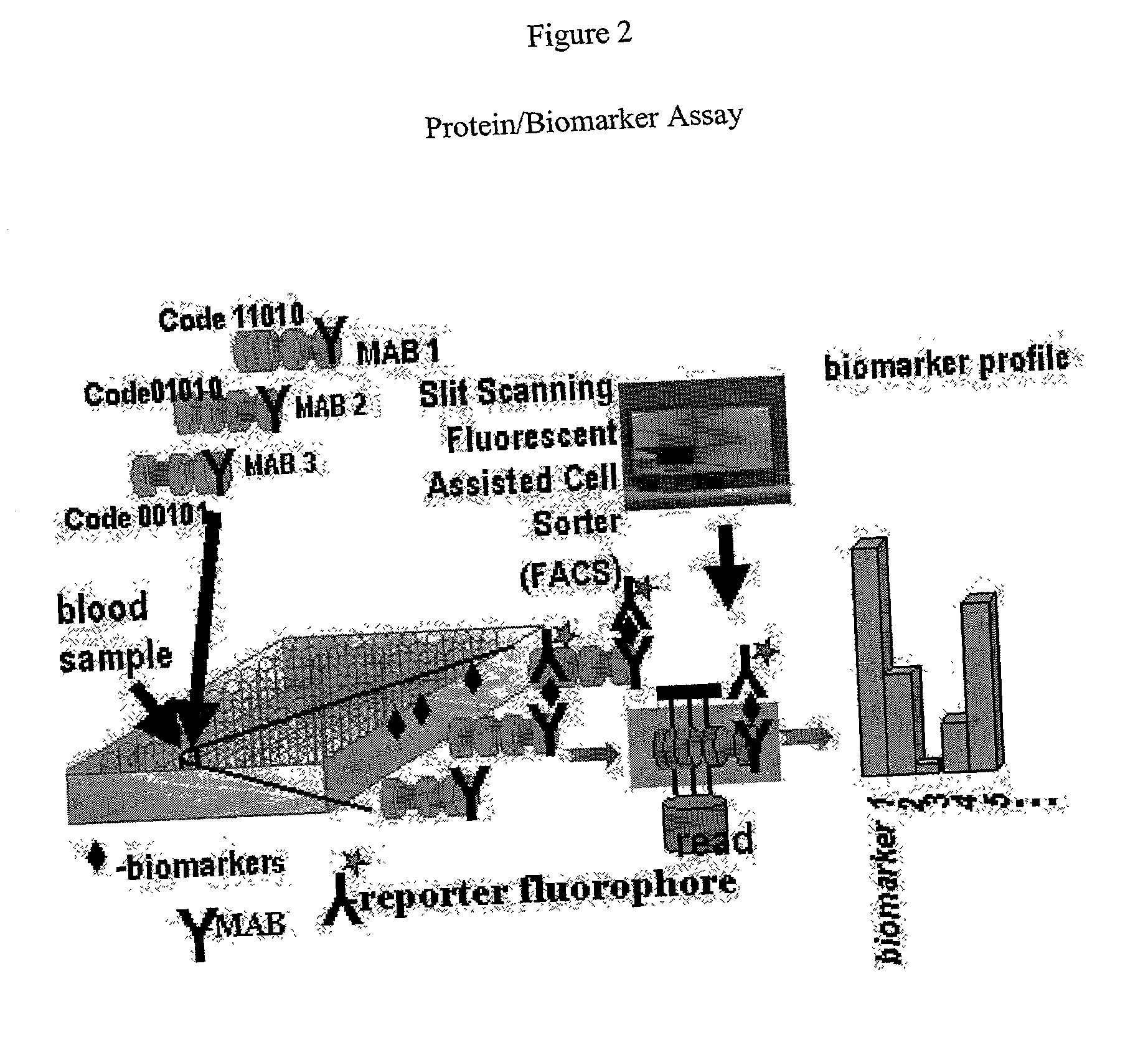There are, however, limitations to such selection strategies.
Such samples can be costly and difficult to access, often requiring a priori confirmation that the testing to be conducted is therapeutically relevant and justified.
A blood sample likely contains greater than 10,000
protein targets, yet existing
instrumentation and
assay methodology limits the number that can be realistically used as targets to a far smaller figure.
All of these methods involve well established but costly
instrumentation, requiring specialist expertise for their operation and interpretation of data.
These methods do not provide, either individually or collectively, a method of rapidly screening a massive number of small molecules or biologics against an equally massive number of
protein targets.
2d-
gel electrophoresis is the primary method for the mapping out of proteins (estimated at between 60,000 to 150,000 per
mammal) but has resolution limits imposed by the distance between spots and the
protein loading per spot, thus significantly limiting the technique to high abundance proteins.
This is a severe limitation given that many low abundance proteins are believed to play key roles in cellular signaling and
disease pathways, and that
protein activity provides more therapeutically valuable information than
protein abundance.
Yeast 2-
hybrid systems are powerful tools for the identification of protein-protein and protein-
DNA interactions, although they are hampered by high rates of false positives, a poor ability to identify weak interactions, a relatively low
throughput and are not suited generally to the study of protein-ligand interactions.
MS requires "clean" samples and is not good at analyzing protein complexes.
However, the serial nature of this process combined with the requirement for washing, incubation, and heavy
reagent consumption, mean that this is a costly and time-consuming process.
However, in contrast to
gene arrays, where probes are typically synthetic oligonucleotides, protein microarrays suffer a number of important disadvantages: denaturation of
complex protein structure due to either the protein attachment process and / or storage conditions; sensitivity and selectivity, due to the affinity and cross-reactivity of the binder protein used; and cost, due to the nature of the
mass manufacturing technology used, often based on either
silicon or a special glass.
Furthermore, relative to the in situ synthesis of oligonucleotides, specific to target
DNA /
RNA, and used for the sequencing of
DNA, identification of mutations (such as single
nucleotide polymorphisms, SNPs), proteins cannot be built up in such a way.
In situ synthesis of amino acids has been attempted but without any commercial success to date and needs to be added to a surface in a preformed fashion, i.e. as complete antibodies, mimics, or other form of binder protein.
This necessarily limits the speed at which the process can be achieved, increases the costs, and requires access to such binder proteins.
These chips are, however, expensive, require lead times of up to one month, and provide oligomers of a limited number of bases.
It means that yield would be very poor for oligomers of greater than 25 bases in length.
This significantly limits the sensitivity of this method for application such as
gene-expression profiling, where only abundant genes are detected and not low copy numbers of genes, or in some cases their splice variants.
This shortcoming can be circumvented by PCR amplification of the expressed
RNA, however, artifacts are known to be created by such processes along with the fact that the biases introduced by PCR must be accounted for in the interpretation of results and
gene expression profiling methodology used.
The limited flexibility and high access costs associated with Affymetrix's technology have resulted in a number of companies, and users, producing glass-slide based arrays.
Despite significant growth in the use of these
microarray-based systems, limits in the applicability of these systems have led to dissatisfaction among users and many pharmaceutical companies have expressed interest in
alternative methods of achieving
high throughput screening.
Spectral discrimination of codes becomes more challenging as do the costs associated with manufacturing the particles.
This can present a problem in media where
background fluorescence occurs in the same frequency range as the coding.
However, these technologies have limitations in practice, including the fact that attachment of proteins on
semiconductor nanocrystals is non-trivial and tends to denaturation, and the utilization of
metal substrates (such as by SurroMed) facilitates non-
specific adsorption of non-target proteins, as well as limitations in their applicability such as the fact that presenting a reflectance-based code on a particle would be difficult to read in turbid media such as
whole blood.
Specifically, the resulting particles should not aggregate or form clusters since clustered particles would create difficulty in distinguishing one particle from another.
This could be achieved through the use of a
photoresist with an optically modifiable surface or one whose starting surface is 100% occupied with a different functional group, thus is not conducive to further functionalization.
For example, when the sample molecule is
nucleic acid and the particles are used to detect and identify binding in a sequencing reaction, steric hindrance may obstruct target
nucleic acid during the
binding process resulting in delayed or non-binding in a sample that otherwise could have bound.
 Login to View More
Login to View More 


